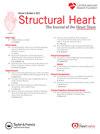Left Atrial Appendage Occlusion: Expanding Indications and New Developments
IF 1.4
Q3 CARDIAC & CARDIOVASCULAR SYSTEMS
引用次数: 0
Abstract
Percutaneous left atrial appendage occlusion (LAAO) is recommended in several major international society guidelines as a viable alternative to therapeutic anticoagulation for the prevention of ischemic stroke in patients with nonvalvular atrial fibrillation or flutter. Recent innovations in device development have improved the safety and procedural success of LAAO, further fueling enthusiasm for expanding its indications beyond patients with high-bleeding risk from oral anticoagulation use. It is the aim of this review to provide historical context in addition to recent updates and upcoming developments and provide practical suggestions on how best to care for patients who are candidates for LAAO in contemporary practice. Recent data comparing the safety and efficacy of post-LAAO antiplatelet vs. antithrombotic therapy will be highlighted, with specific recommendations regarding which patients are best suited for each strategy. We will also address the safety and practical considerations provided by emerging trials on concomitant LAAO during other structural heart interventions such as transcatheter aortic valve replacement and mitral valve interventions, as well as electrophysiology procedures including catheter ablation for atrial fibrillation and pacemaker implantation. Practical considerations for the use of transesophageal echocardiography or intracardiac echocardiography for procedural guidance will also be discussed. As the evidence supporting LAAO continues to evolve, this review will serve as a primer on the recent and upcoming advances in device technology and management strategies positioned to further push LAAO forward into the future.
左心耳闭塞:扩大适应症和新进展
经皮左心耳闭塞术(LAAO)在几个主要的国际社会指南中被推荐为治疗性抗凝治疗的可行替代方案,用于预防非瓣膜性心房颤动或扑动患者的缺血性卒中。最近设备开发的创新提高了LAAO的安全性和手术成功率,进一步激发了将其适应症扩展到口服抗凝使用的高出血风险患者之外的热情。这篇综述的目的是提供历史背景,以及最近的更新和未来的发展,并就如何在当代实践中最好地照顾LAAO患者提供实用建议。将强调比较laao后抗血小板与抗血栓治疗的安全性和有效性的最新数据,并就哪种患者最适合每种策略提出具体建议。我们还将讨论在其他结构性心脏干预(如经导管主动脉瓣置换术和二尖瓣干预)以及包括心房颤动导管消融和起搏器植入在内的电生理手术中伴随LAAO的安全性和实际考虑。应用经食管超声心动图或心内超声心动图进行手术指导的实际考虑也将被讨论。随着支持LAAO的证据不断发展,本综述将作为设备技术和管理策略的最新和即将到来的进展的入门,以进一步推动LAAO向前发展。
本文章由计算机程序翻译,如有差异,请以英文原文为准。
求助全文
约1分钟内获得全文
求助全文
来源期刊

Structural Heart
Medicine-Cardiology and Cardiovascular Medicine
CiteScore
1.60
自引率
0.00%
发文量
81
 求助内容:
求助内容: 应助结果提醒方式:
应助结果提醒方式:


